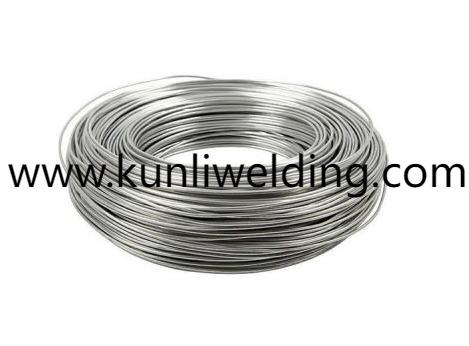Kunliwelding How Should Yards Validate ER5087 Before Fleet Adoption

Lightweight structures and rising demand for resilient maritime assets have pushed welding teams to reconsider filler choices, and Aluminum Welding Wire ER5087 often shows up in those conversations because of its reputation for delivering stronger weld deposits in marine environments. Shipbuilders, repair yards and offshore fabricators are asking how this filler performs under salt air exposure and mechanical load so they can keep vessels and platforms in service with predictable maintenance cycles.
Why ER5087 attracts attention is partly practical. Marine and offshore work places unique demands on welds: parts face salt spray humid atmospheres and cyclic loading from waves and wind. A filler that helps produce welds with dependable tensile behavior and manageable distortion is attractive to teams that must balance durability with efficient assembly. In yards where schedules are tight and downtime is costly, welders appreciate a wire that responds predictably to routine welding methods and that fits both automatic and manual workflows.
Metallurgy influences how a wire behaves in service. In many marine alloys a modest adjustment to filler chemistry can change how the weld metal solidifies and how it responds to repeated loading. That change affects crack initiation and growth and interacts with how coatings adhere after welding. For asset owners who monitor lifecycle costs, a filler that reduces the frequency of touch up and repainting has a direct operational benefit because it shortens the intervals between maintenance windows and helps crews keep assets available for service.
Practical shop behavior multiplies the value a filler brings. Controlled heat input consistent travel speed and precise fit up limit distortion and keep the heat affected zone narrow. Those process controls make it easier for a filler to do its job: provide a weld deposit that resists fatigue and accepts protective coatings with minimal preparation. Fabrication teams that standardize these variables across shifts find that joint quality becomes repeatable and that finish crews face fewer surprises when parts move to sealing or painting.
Field repairability is another key advantage cited by maintenance crews. Offshore assets and coastal craft often require on the spot repairs where containment and heavy equipment are limited. A wire that welds cleanly in constrained positions and that helps produce a deposit amenable to quick dressing and sealing reduces the time a vessel spends in dry dock or at berth. For operators balancing operating schedules and repair windows that shorter turnaround is a tangible benefit.
Corrosion management is integral to marine welding practice. Good surface preparation and the right sealants remain the primary defense, but the weld surface itself must not undermine those protections. That is why a filler's interaction with surface treatments matters: when a filler produces a smooth bead that accepts coatings evenly, the finished joint is less likely to trap moisture at the interface. Procurement teams increasingly ask suppliers for handling and finishing guidance so their painting crews can apply coatings that perform long after the weld cools.
Supply chain agility and packaging also shape daily outcomes. Spools that arrive sealed and with guidance on storage reduce the chance of contamination or feed problems that show up as porosity on the first weld. In global markets where shipping schedules fluctuate, buyers prefer suppliers who document packaging and who support sample testing so yards can qualify material before committing large purchases. That practical transparency shortens qualification time and reduces the risk of surprises on busy projects.
Training and validation are the final link in turning a filler into reliable production performance. Short qualification runs that mimic the actual joint geometry and finishing sequence reveal whether the chosen wire meets shop expectations. Capture the settings that produced acceptable beads and hold those parameters as standard work. When teams combine supplier guidance with repeatable in shop tests the outcome is fewer interruptions, steadier finishes and predictable maintenance intervals for marine assets.
Welders and engineers also benefit from dialog with suppliers about repair routines and post weld treatments. Suppliers who publish handling notes reconditioning steps and termination advice give fabricators the tools needed to preserve feedability and to avoid contamination issues that complicate marine welding. That cooperative approach shortens evaluation cycles and helps projects move from prototype to production with fewer logistical challenges.
In short, ER5087 is noted in marine and offshore circles because its weld metal characteristics support stronger joints and because, when combined with disciplined welding practice, it helps reduce downtime and simplify finishing. For teams focused on keeping maritime assets available and on controlling lifecycle costs, aligning design, weld procedure and supplier guidance turns a single wire choice into broader operational resilience. For product notes, handling advice and application guidance from the manufacturer visit the news and resource page at www.kunliwelding.com .
- Art
- Causes
- Crafts
- Dance
- Drinks
- Film
- Fitness
- Food
- Spiele
- Gardening
- Health
- Home
- Literature
- Music
- Networking
- Other
- Party
- Religion
- Shopping
- Sports
- Theater
- Wellness


